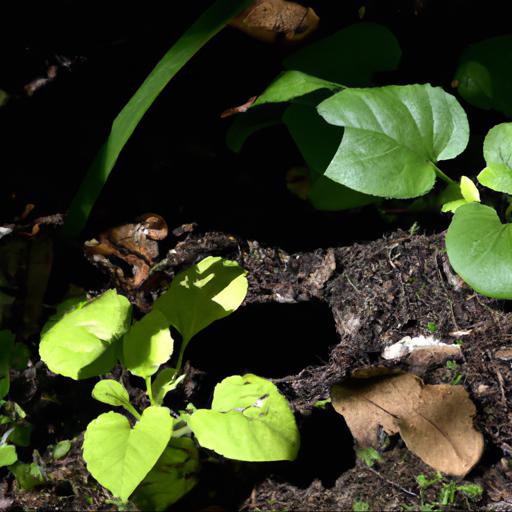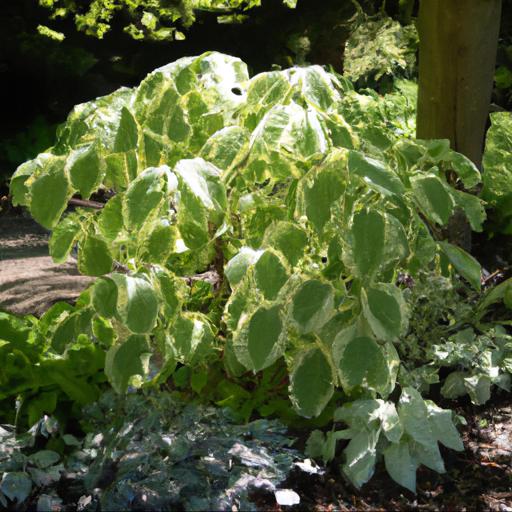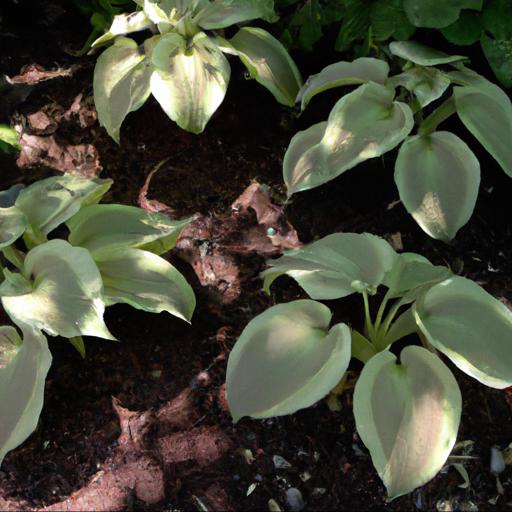Are you looking for plants that will thrive in dappled shade? If so, you’re in luck! There are six great plants that can tolerate the partial shade of dappled shade, and they are sure to add beauty and interest to your garden.
From ferns to evergreens, these plants are easy to maintain and can provide a stunning backdrop to your garden. In this blog, we will explore the six best plants for dappled shade and discuss why they are a great choice for your garden.
Benefits of planting in dappled shade

. Gardening in a dappled shade environment can be a challenge, however selecting the right plants can be both extremely rewarding and exhilarating. There are many different varieties of plants that thrive in the unique environment that dappled shade provides, and understanding how to select the right plants can make a huge difference.
In this blog, I will highlight six plants that are particularly well-suited to thriving in a dappled shade environment, and explain the many benefits they can bring to your garden. One of the key plants that fair particularly well in dappled shade are Bleeding Hearts.
This beautiful flower produces stunning blooms in shades of both deep pink and white. This plant is well known for its ability to remain in bloom throughout the entire growing season and many gardeners find the delicate shape of the blossoms to be quite stunning.
A second plant well suited to a dappled shade environment is Hen and Chicks. This low-maintenance, slow-growing succulent creates dense clusters with color in shades of pink and point, providing a lovely addition to any garden. Hakonechloa Grass is yet another fantastic addition to any garden in dappled shade.
This grass thrives in the shade, and provides an incredibly unique texture and visually appealing design. HAKonechloa is one of the few ornamental grasses that will not turn brown during the winter months and will remain lush green year-round.
Hostas are another excellent choice for a dappled shade environment. Hostas are characterized by their large, bold foliage and available in many different color ranges and varieties. Pulmonaria, also known as Lungwort, is another great choice for a dappled shade garden.
The unique foliage that these plants bring to a garden is absolutely stunning, with attractive flowers in shades of pink, white, and blue. Japanese Woodsia is yet another wonderful plant for those shaded areas of your garden. This plant thrives in dappled shade, featuring remarkable rusty red foliage that captures the eye and transform any garden into a whimsical wonderland. When selecting the best plants for a dappled shade environment, a little bit of research and knowledge can go a long way towards creating a gorgeous and inviting garden. The six plants highlighted above are a great starting point and are sure to add unique charm and beauty to any garden. With the right selection of plants, your garden will surely thrive under the dappled shadows of the trees.
Six plants perfect for dappled shade

As an avid UK garden expert, I’m often asked for advice on plants for dappled shade. Dappled shade is a common feature in many gardens, as it is where low light penetrates through trees or structures created in the garden. As such, selecting a few plants to fill this area can be quite difficult.
However, there are a wide selection of plants that are suitable for both semi-shaded and shaded areas, so if you have a dappled shade area in your garden, these six plants could be a great fit. The first is the European Bleeding Heart (Lamprocapnos Spectabilis), which is a delicate perennial with a beautiful, airy form and drooping, heart-shaped flowers.
It is quite hardy, making it a great choice for semi-shaded areas, and blossoms from late spring to early summer. The second is the Dicentra Forms (Dicentra spectabilis), also known as ‘Lamprocapnos Spectabilis’.
It is a unique, clump-forming perennial with deeply cut foliage and reddish-pink flowers. It thrives in shaded spots, making it the perfect addition to a dappled shade garden. The third is the Hosta Plantaginea, a deeply shaded-tolerant perennial with striking, large leaves and bell-shaped flowers.
It can reach up to a metre in height, but it will stay much smaller in semi-shaded or shaded spaces. It blooms in mid-summer, and its large leaves create a lush, groundcover effect. The fourth is the fern Blechnum Spicant, which, while somewhat fussy to propagate, is a graceful, low-growing plant perfect for dappled shade.
Its thin, fronded foliage adds texture to walkways or around garden features such as water features or bird baths. The fifth is the Astilbe Chinensis Varietitt, with its colourful foliage and tall spikes of white, pink, or lavender flowers.
This plant attracts hummingbirds and butterflies, and is a particularly useful addition to shaded areas, as it prefers moist, humus-rich soil. The last plant is the Wood Anemone (Anemone Nemorosa), a perennial wildflower with white, feathery petals and bright yellow anthers. Wood anemones can be found in woodlands, and will spread quickly in dappled light, where their flowers will bloom from March to April. These six plants offer many benefits and help to create a focal point in a dappled shade area. By combining them, you can add texture, colour, and life to a potentially dull spot in your garden, creating a tranquil space which is home to vibrant wildlife.
Tips for planting in dappled shade

Planting in dappled shade can be a challenge, but with the right tips and an understanding of which plants thrive in these conditions, you can create a stunning and vibrant garden. To help make the task easier, here are six plants that are ideal for dappled shade. One of the best plants for dappled shade is Heuchera.
This perennial has unusual bell-shaped flowers in a variety of colors and can withstand cooler temperatures, making it ideal for areas that don’t get much direct sunlight. Not only is it attractive, but it’s also low-maintenance and provides ground cover for other plants in your garden.
Ferns are another good choice for dappled shade. They add an eye-catching touch to any garden and can stand up to colder climates.
Depending on the species, they may also require very little maintenance. Another option is grass sedge, which grows well in moist and humid environments with partial sunlight. The hosta is a popular choice for dappled shade, and it has a lot of benefits.
It’s low-maintenance and grows quickly, and it comes in a wide range of colors and textures. Astilbe and Lamium are also good options. Both have brightly colored blooms and can bring life to your garden even in the shade.
Finally, Philadelphus is a beautiful shrub for dappled shade. It’s also known as mock orange due to its fragrant white flowers in the summertime.
It’s easy to maintain and can reach heights of up to 8 feet, making it a great way to create a beautiful border along a garden fence. By choosing the right plants for dappled shade, you can create a beautiful and vibrant garden with minimal effort. For ideas and inspiration, take a look at Heuchera, ferns, grass sedge, hosta, astilbe, Lamium, and Philadelphus. With careful selection and careful consideration, you can create a garden that will thrive in even the most challenging dappled shade conditions.
Our video recommendation
Conclusion
This article covers six plants that thrive in dappled shade. These include: Hostas, Astilbes, Heucheras, Ferns, Japanese Maples, and Hydrangeas.
All of these plants can tolerate partial sun and partial shade, making them ideal for areas with dappled shade. With their different shapes, sizes, and colors, these plants can add texture and beauty to any garden.
FAQ
What types of plants are best suited for dappled shade?
Plants that are best suited for dappled shade include ferns, hostas, astilbes, impatiens, and begonias.
How much sunlight does dappled shade provide?
Dappled shade provides partial sunlight, usually with a few hours of direct sunlight and several hours of indirect sunlight.
What are the benefits of planting in dappled shade?
The benefits of planting in dappled shade include reduced water loss, protection from extreme temperatures, and improved soil fertility. Additionally, plants in dappled shade are less prone to disease and pests, and they require less maintenance than those in full sun.
What are some common plants that thrive in dappled shade?
Some common plants that thrive in dappled shade include hostas, ferns, astilbes, impatiens, begonias, and heucheras.
How can I create a dappled shade environment for my plants?
To create a dappled shade environment for your plants, you should place them in an area that receives filtered sunlight, such as beneath a tree with thin branches or a lattice structure. You can also use shade cloth to filter the sunlight and create a dappled shade environment.
What are some tips for caring for plants in dappled shade?
1. Water regularly and deeply to ensure the soil is moist but not soggy. 2. Use a soil that drains well and is rich in organic matter. 3. Fertilize with a balanced fertilizer every few weeks. 4. Prune plants regularly to maintain their shape and encourage new growth. 5. Mulch around the plants to help retain moisture and reduce weeds. 6. Protect plants from strong winds and extreme temperatures.

